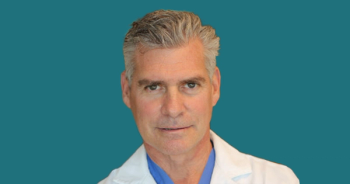
Gene Therapy May Slow Progression of MPS Type IIIA
Two patients reached significantly higher cognitive development ages than seen in natural history 24 months after dosing.
Lysogene’s LYS-SAF302, an
Cerebrospinal fluid (CSF) levels of heparin sulfate (HS) were reduced by a mean of 22% from baseline in 16 patients at 24 months after treatment with LYS-SAF302 and serum neurofilament light (NFL) levels decreased by a mean of 41% from baseline. Investigators also observed continuous increases in cognitive, language, and motor functions, measured according to Bayley’s Scales of Infant Development, Third edition (BSID-III), in 3 patients.
"Preliminary data for AAVance indicates that subjects with MPS IIIA treated prior to 31 months of age not only continued with increasing developmental age but exceeded developmental ages of any MPS IIIA subjects within the natural history cohorts," principal investigator Raymond Wang, MD, director, Foundation of Caring Multidisciplinary Lysosomal Disorder Program, CHOC Children's Specialists, Orange, California, said in a statement.1 "This data is highly suggestive of LYS-SAF302 efficacy in this treatment population, marking an important milestone as no treatment is currently available to slow the progression of MPS IIIA."
Notably, 24 months after dosing, 2 patients with mutations associated with severe disease, reached a cognitive developmental age (DA) 5-6 months higher than the previous highest DA observed in MPS IIIA natural history studies. Another 3 patients treated in the study maintained stable cognitive DAs relative to baseline at 24 months, and stable or increasing language and motor development scores.
While significant reductions in the amount of HS in the CSF were seen at 24 months, it should be noted that no significant reduction in serum HS levels was observed at 6, 12, or 24 months after dosing, which was deemed consistent with the intraparenchymal mode of administration of the treatment. Additionally, of the 3 patients showing a continuously increasing DA at 24 months, 1 patient was heterozygous for a severe mutation and an S298P mutation, which could lead to either a classical severe or an intermediate phenotype.
The single-arm, multi-center AAVance trial enrolled children 6 months and older with a documented MPS IIIA diagnosis, based on confirmed mutations in the SGSH gene, and a cognitive development quotient (DQ) score on the BSID-III of 50% or above. Patients who had participated in another gene therapy or cell therapy clinical trial or who had previously used SGSH enzyme replacement therapy for more than 3 months were excluded from the study.
Patients were treated with a one-time intracerebral administration of adeno-associated viral vector serotype rh10 containing the human N-sulfoglucosamine sulfohydrolase (SGSH) cDNA. The primary end point is the change from baseline in DQ, compared to natural history studies, measured with either the BSID-III or the Kaufman Assessment Battery for Children, Second Edition (KABC-II), depending on age and ability range. Secondary end points will include changes from baseline in the total adaptive behavior composite standard score and total cortical grey matter volume and white matter volume, as well as changes in sleep pattern, patient quality of life, and parent quality of life. Safety-related secondary end points include the incidence and severity of treatment-emergent adverse events and serious adverse events.
“We are very pleased to confirm on a larger scale the encouraging data already observed earlier, notably stabilization or improvement in cognitive, language and motor functions in the younger patient population, even in those presenting with severe forms of the disease. We have recently locked the database of the 24-month post-treatment follow-up data. Full statistical analyses are underway with results expected in September this year. This represents a very exciting milestone as it completes years of efforts by the Lysogene team to bring a treatment to patients with MPSIIIA, a disease with a high unmet medical need. By Q3 2022, we should have the necessary elements to discuss the next steps with the regulatory authorities,” Marie Trad, MD, chief medical officer, Lysogene, added to the statement.1
Lysogene will present additional data from AAVance at the ADVANCE 2022 Sanfilippo Community Conference held on July 7-8, 2022, and at the 3rd Annual Gene Therapy for Neurological Disorders Europe held on July 11-13, 2022. Running alongside AAVance is the PROVide study, which is collecting video of patients in their home environments to further provide information on the treatment’s effect on children’s development.2 Full results from both studies are expected by the middle of September 2022.
REFERENCES
1. Lysogene provides additional update on AAVance phase 2/3 gene therapy clinical trial with LYS-SAF302 in children with MPS IIIA. News release. Lysogene. July 7, 2022. https://www.businesswire.com/news/home/20220706005721/en/Lysogene-Provides-Additional-Update-on-AAVance-Phase-23-Gene-Therapy-Clinical-Trial-with-LYS-SAF302-in-children-with-MPS-IIIA
2. LYS-SAF302 clinical trial. Website. Lysogene. July 7, 2022. https://www.lysogene.com/lys-saf302-clinical-trials/
Newsletter
Stay at the forefront of cutting-edge science with CGT—your direct line to expert insights, breakthrough data, and real-time coverage of the latest advancements in cell and gene therapy.

















































